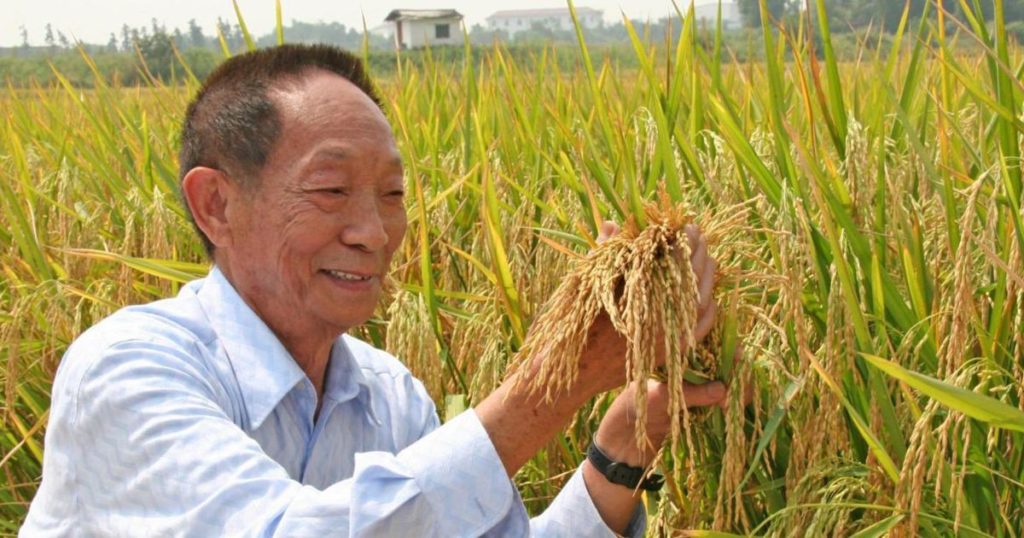China’s Saltwater Rice Boosts Country’s Rice Harvest by Nearly 20%
Back in the 1970s, the godfather of rice, Yuan Longping was one of the first scientists to develop hybrid rice varieties. Riding on fears that the Chinese population was set to boom within the coming decades, his team helped create numerous strains of rice that grow faster, yield more, and resist more stress. Nowadays, up to 20 percent of the world’s rice comes from rice species created through his pioneering work.
He has now developed a strain of super-tough “sea rice” that farmers can grow in salty water, set to spark a rice revolution that could help feed over 200 million people.

Rice grown on a commercial scale in diluted seawater has, for the first time, made it into the rice bowls of ordinary Chinese people after a breakthrough in food production following more than four decades of efforts by farmers, researchers, government agencies and businesses.
Researchers have been trying to grow the grain in salty water for decades but have only now developed varieties that could be commercially viable.
The rice was grown in a field near the Yellow Sea coastal city of Qingdao in China’s eastern Shandong province. 200 different types of the grain were planted to investigate which would grow best in salty conditions.
Sea water was pumped into the fields, diluted and then channelled into the rice paddies.
The scientists expected to produce 4.5 tonnes of rice per hectare but the crops exceeded expectations, in one case delivering up to 9.3 tonnes per hectare. “The test results greatly exceeded our expectations,” Liu Shiping, a professor of agriculture at Yangzhou University who is involved in the project.
A kilogram of the rice costs 50 yuan (US$7.50), about 8 times more than regular rice. However, cost is expected to go down as mass production increases, and rice itself is a pretty cheap food. Considering that in total, China has more than one million square kilometres of waste land — an area big enough to fit Texas and California — it’s easy to see why researchers are so thrilled. It offers the potential to feed a lot of people, even if it does mean paying a bit more.
There are also other benefits to this technique. Saltwater keeps pests and parasites at bay, meaning that producers might reduce costs even more. Also, while the rice itself is not salty, it is richer in nutrients such as calcium. Professor Huang Shiwen, the leader of the rice disease research team at the China National Rice Research Institute in Hangzhou, Zhejiang, said this could help keep many potentially harmful bacteria at bay.
Yuan Longping, who has long studied salt-resistant rice founded Yuan Ce Biological Technology, a Qingdao-based start-up which plans to bring this modified rice to the tables. He believes that already by the end of the year, the “sea rice” will make 10 million yuan ($1.5 million) in revenue, a very optimistic figure for something up to a few months ago was completely uncertain.























